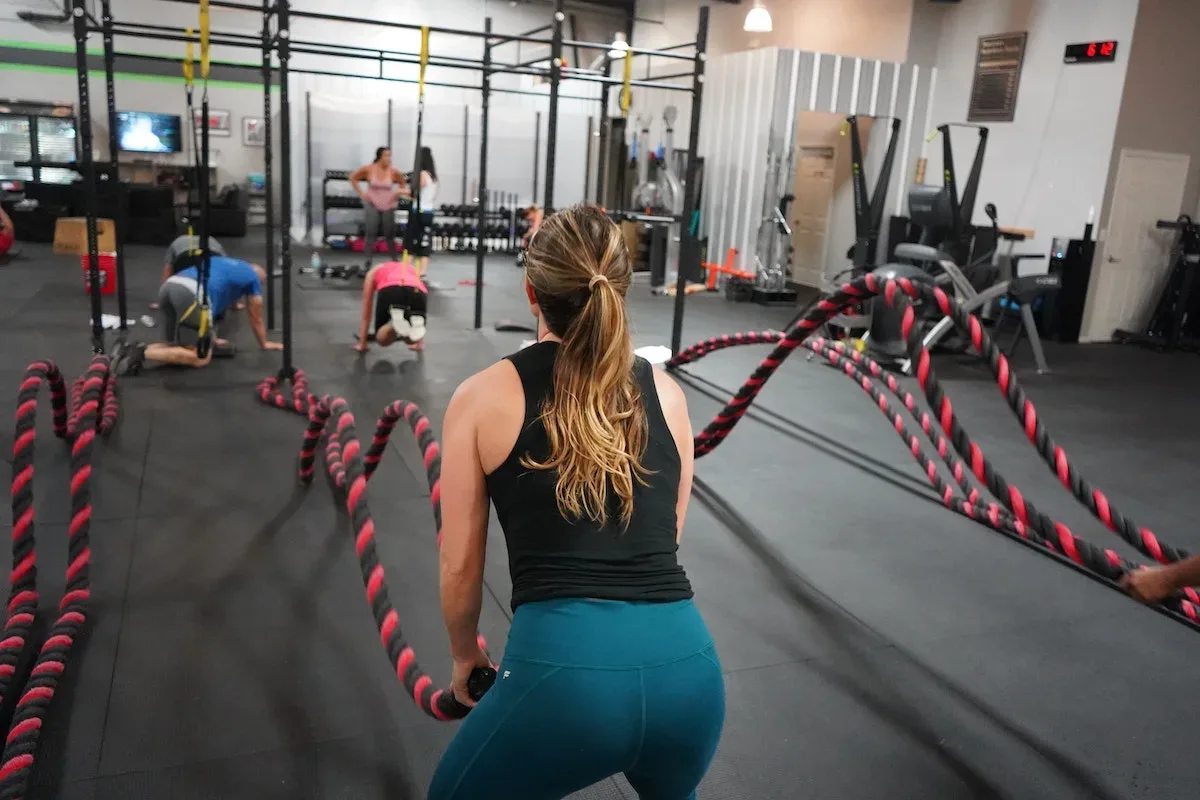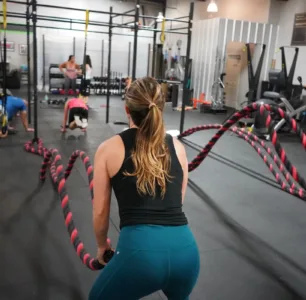Are you ready to take your fitness game to the next level? Look no further than battle ropes. These powerful tools are the perfect addition to any workout routine, whether you’re a seasoned athlete or a beginner looking to get in shape. In this guide, we’ll explore everything you need to know about battle ropes, from their history to their benefits, and even provide tips on how to use them effectively.
History of Battle Ropes
The use of ropes in fitness dates back centuries, with ancient Greek and Indian warriors using ropes to build strength and endurance. In recent years, battle ropes have become increasingly popular among fitness enthusiasts, thanks in part to their appearance in CrossFit workouts and other high-intensity training programs. Today, battle ropes can be found in gyms all over the world and are a favorite of athletes and trainers alike.
Benefits of Battle Ropes
The benefits of battle ropes are numerous. Not only do they provide a great cardiovascular workout, but they also build muscle, increase endurance, and improve overall fitness. Battle ropes work by engaging multiple muscle groups at once, including the arms, shoulders, back, and core. This makes them a great tool for anyone looking to improve their overall fitness, regardless of their current fitness level.
Using Battle Ropes
When it comes to using battle ropes, there are a few key things to keep in mind. First, it’s important to start slowly and gradually increase the intensity of your workout over time. This will help prevent injury and ensure that you’re getting the most out of your workout. Additionally, it’s important to maintain proper form while using battle ropes. This means keeping your core engaged and your back straight, and using your arms and shoulders to create the waves.
Workout Ideas
There are countless ways to incorporate battle ropes into your workout routine. One popular method is to create a circuit of exercises that includes both battle rope waves and other exercises such as squats, lunges, and push-ups. Another popular option is to use battle ropes as part of a high-intensity interval training (HIIT) workout. Whatever your fitness goals, there’s sure to be a battle rope workout that’s right for you.
Conclusion
Whether you’re a fitness enthusiast or a beginner looking to get in shape, battle ropes are a powerful tool that can take your workout routine to the next level. From their history to their benefits and how to use them effectively, this guide has everything you need to know to get started. So why wait? Unleash your inner warrior with battle ropes and take your fitness game to new heights.
Battle ropes and Muscle development
Battle ropes are a great tool for building muscle and improving overall fitness. When used correctly, battle ropes engage multiple muscle groups at once, including the arms, shoulders, back, and core. This makes them a great tool for building strength and endurance.
One of the primary benefits of using battle ropes for muscle development is that they allow you to perform high-intensity, low-impact exercises. This means that you can work your muscles without putting unnecessary strain on your joints, which can be especially beneficial for individuals with joint pain or injuries.
There are countless ways to incorporate battle ropes into your muscle-building routine. One popular method is to use them as part of a circuit that includes exercises such as push-ups, lunges, and squats. This allows you to work multiple muscle groups at once, which can help you build muscle more quickly and effectively.
Another great way to use battle ropes for muscle development is to perform wave exercises. This involves creating waves with the ropes, which engages the muscles in your arms, shoulders, and back. By varying the speed and intensity of the waves, you can create a challenging workout that targets your upper body muscles.
When using battle ropes for muscle development, it’s important to start slowly and gradually increase the intensity of your workouts over time. This will help prevent injury and ensure that you’re getting the most out of your workouts. Additionally, it’s important to maintain proper form while using battle ropes. This means keeping your core engaged and your back straight, and using your arms and shoulders to create the waves.
What muscles do Battle ropes work most
Battle ropes are a highly effective tool for working multiple muscle groups simultaneously. The primary muscles that are engaged during battle rope exercises are the muscles in your upper body, including your arms, shoulders, chest, and back. However, battle ropes also work your core muscles and can even engage your lower body muscles to a lesser extent.
When performing battle rope exercises, the muscles in your arms and shoulders are primarily responsible for creating the waves in the ropes. This means that your biceps, triceps, and shoulders are heavily engaged during these exercises. The muscles in your chest and back also play a significant role, as they work to stabilize your upper body and maintain proper form while performing the exercises.
Additionally, battle ropes require you to engage your core muscles to maintain stability and balance. This means that your abs and lower back muscles are also being worked during these exercises. Finally, some battle rope exercises, such as lunges or squats with battle ropes, can engage your lower body muscles, such as your quads, hamstrings, and glutes.
Overall, battle ropes provide a highly effective workout for your upper body muscles, while also engaging your core and lower body muscles to a lesser extent. By incorporating battle ropes into your workout routine, you can build strength and endurance in multiple muscle groups at once, resulting in a highly efficient and effective workout.
How can Battle ropes benefit rugby players?
Battle ropes are a highly beneficial training tool for rugby players, as they can help to improve strength, endurance, and overall fitness. Specifically, there are several ways that battle ropes can benefit rugby players:
- Upper body strength: Rugby requires a great deal of upper body strength, particularly in the arms, shoulders, and chest. Battle ropes are an excellent way to build this strength, as they engage all of these muscle groups simultaneously. By incorporating battle ropes into their training routine, rugby players can improve their ability to tackle, pass, and carry the ball.
- Core strength: Rugby players also need to have a strong core in order to maintain balance and stability on the field. Battle ropes require you to engage your core muscles in order to maintain proper form while performing the exercises. This means that rugby players who use battle ropes in their training routine can improve their core strength and stability, which can translate to improved performance on the field.
- Endurance: Rugby is a high-intensity sport that requires a great deal of endurance. Battle ropes are an excellent way to improve endurance, as they provide a challenging cardiovascular workout that engages multiple muscle groups at once. By incorporating battle ropes into their training routine, rugby players can improve their overall fitness and endurance, which can help them to perform better on the field.
- Injury prevention: Rugby is a physical sport that can put a lot of strain on the body, particularly the joints. Battle ropes provide a low-impact workout that can help to improve strength and endurance without putting unnecessary strain on the joints. This means that rugby players who use battle ropes in their training routine may be less likely to experience injuries on the field.
In conclusion, battle ropes are a highly beneficial training tool for rugby players. By incorporating battle ropes into their training routine, rugby players can improve their upper body and core strength, endurance, and overall fitness, while also reducing their risk of injury on the field.

